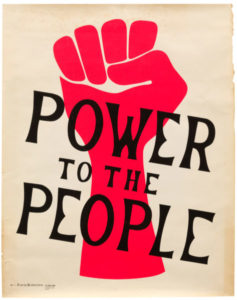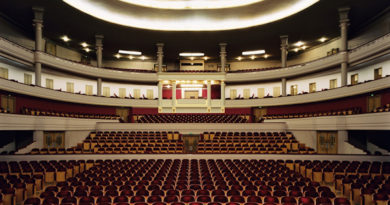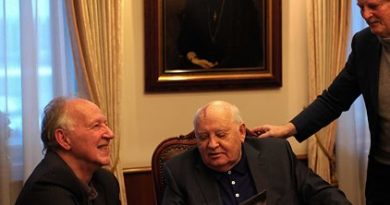Get Up Stand Up: The voice of the people before Twitter – the poster in May 1968
Get Up Stand Up: an exhibition on civil disobedience. The advent of social media has breathed new life into public protest, just as posters did in the late 1960s. While society has evolved since then, the issues facing it remain the same: the environment, minority rights, peace, work and gender equality.
Get Up Stand Up explores the visual world of the posters created by the protest movements of the period between 1968 and 1973. These six years of intense political and social upheaval were marked in France by the student and worker movements of May 1968 and in the USA by the continuing fight for minority rights, demonstrations against the Vietnam War, and the rise of feminism and environmentalism, while a desire for greater freedom, equality, dignity and justice was expressed across the world as a whole. “Sois jeune et tais-toi” (“Be Young and Shut Up”), “Power to the People”, “Make Love Not War” and “Black Power” were just some of the provocative slogans used in visuals and disseminated by thousands thanks to the new and fast technique of silkscreen printing. In the process students and artists came up with a simple and concise universal, visual language possessed with a hitherto unseen expressive power.

The golden age of protest posters began to fade in 1973, with the USA’s withdrawal from Vietnam. Their revolutionary style had made an impact, however, thanks to their explosive mix of violence and humour. In presenting an image with no text or a text with no image, they broke new ground, while their legacy lives on today through Occupy Wall Street, Black Lives
Matter, the Women’s March, the Arab Spring and the “Je suis Charlie” movement. The breath of freedom they provided has helped promote the cause of minority rights, combat violence and nurture empathy.
- More than 400 posters and items
- 30 countries
- Five continents
- Installation of the historic artwork “Frappez les gradés” (“Strike the Officers”), created by Julio Le Parc in 1969.
- 27 May: lecture and slideshow by Lincoln Cushing, a US archivist, writer and specialist in the visual history of social



